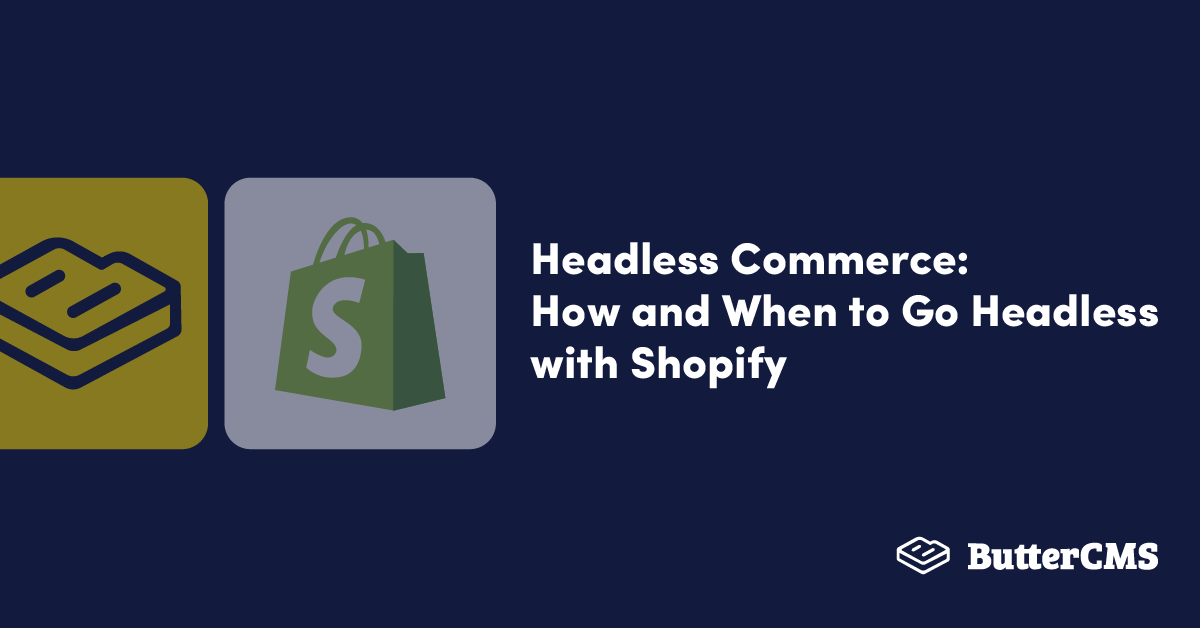1/28/2025
Exploring the Benefits of Headless CMS with Shopify
In the ever-evolving world of e-commerce, brands are constantly seeking ways to stay competitive. One innovative solution that has emerged is headless CMS integrations with platforms like Shopify. This modern approach separates the frontend from the backend of a business's digital interface, allowing for endless customization and personalized experiences. In this blog post, we'll dive deep into the benefits of using a headless CMS with Shopify, exploring how this combination can elevate your online presence while enhancing customer satisfaction and engagement.

What is Headless CMS?
Before we get into the benefits, let's establish what a headless CMS is. In a typical CMS, the backend (the storage of content) is tied directly to the frontend (the presentation layer viewed by users). This monolithic structure can limit flexibility and responsiveness to changing market demands. A headless CMS, on the other hand, decouples the frontend from the backend. It allows developers to use APIs to deliver content to any frontend technology of their choice, whether that's a website, mobile app, or other digital interfaces. This modular approach empowers brands to create highly customizable and responsive user experiences.
Exploring the Benefits of Headless CMS with Shopify
1. Enhanced Customization Options
When you integrate a headless CMS with Shopify, you unlock a treasure trove of customization capabilities. Since the frontend is decoupled from the backend, brands are no longer restricted by Shopify’s standard themes or layouts. Instead, developers can utilize frameworks like React, Next.js, and Vue.js to build tailored user experiences that align perfectly with their brand identity. This degree of customization leads to richer interactions, ultimately boosting customer engagement.
2. Omnichannel Selling Made Easy
In today’s market, providing a seamless experience across multiple channels is CRUCIAL. Headless CMS with Shopify enables brands to create content once and distribute it across various touchpoints, like websites, apps, kiosks, or even social media platforms. This omnichannel approach ensures a CONSISTENT customer experience no matter where or how customers are interacting with your brand.
3. Improved Performance & Loading Times
Performance is a significant consideration in e-commerce. Headless setups typically lead to faster loading times compared to traditional setups since backend operations (like inventory management) don’t bog down the frontend experience. By executing time-consuming tasks on the backend, customers can enjoy a smoother, more responsive interface. In fact, studies show that just a single second of load time can significantly impact conversion rates and overall customer satisfaction!
4. Advanced SEO Capabilities
Having an engaging and dynamic website isn't enough if it doesn't rank well in search engine results. Headless CMS allows for a more focused approach to SEO optimization. Developers can customize URL structures, HTML tags, and schema markups with greater precision, thereby enhancing the website’s visibility in search engines. With a faster page load and tailored metadata, a headless Shopify setup can help drive more organic traffic to your online store.
5. Streamlined Development Process
By employing a headless architecture, teams can work simultaneously on different components of the website without the traditional roadblocks associated with monolithic setups. Frontend and backend developers can operate independently, making updates and enhancements at a much quicker pace.
This means brands can rapidly deploy new features or roll out content revisions without extensive downtime or complex interventions. Speedy iterations lead to optimized workflows and increased productivity levels.
6. Rich Personalization Opportunities
A customer’s journey is not linear. Today’s shoppers expect personalized experiences tailored to their behaviors, preferences, & previous interactions. With a headless CMS, brands can gather and analyze user data effectively, allowing them to deliver targeted content and product recommendations. This results in a more engaging shopping experience, which can lead to higher conversion rates and improved customer loyalty.
7. Cost Efficiency in the Long Run
While the initial setup of a headless CMS coupled with Shopify may seem daunting and potentially more expensive than a traditional monolithic CMS, the cost savings in the long term can be significant. As businesses scale and require more customized solutions, the flexibility offered by a headless setup minimizes the need for constant redevelopment or significant plugin integrations.
By optimizing performance and customer engagement, brands can witness a positive return on investment as sales increase and customer satisfaction improves.
8. Scalability
As your business grows, so do your needs. Sliding into a headless CMS enables you to scale your operations with ease. You can add new layers, channels, or functionalities without compromising performance. This agility is important for accommodating growth, entering new markets, or integrating new technologies.
Why Choose Shopify for Your Headless Solution?
Shopify stands at the forefront of e-commerce solutions today. Its robust platform comes with built-in functionality for payments, inventory management, and order processing. By utilizing Shopify’s Storefront API, brands can ensure an uninterrupted connection between their headless CMS and Shopify’s powerful e-commerce capabilities.
Promotion for Arsturn: Unlock Your Brand’s Potential
If you’re considering increasing your engagement within the digital sphere, then Arsturn is here to facilitate your transition! With Arsturn, you can instantly create custom ChatGPT chatbots for your website, boosting engagement and conversion rates. This no-code solution allows you to foster meaningful interactions with your audience before they even hit the checkout page.
With features that allow for deep customization and insightful analytics, you can ensure that your audience receives timely & accurate information. Plus, it’s user-friendly! Get started with Arsturn today, absolutely FREE—no credit card required. Join the thousands using conversational AI to build connections across digital channels.
Closing Thoughts
In a digital landscape that continues to evolve at lightning speed, businesses must adapt to changing customer expectations and technological advancements. Integrating a headless CMS with Shopify can provide brands the tools & flexibility needed to thrive.
With enhancements in performance, customization, SEO, and omnichannel strategies, the combination of headless architecture and Shopify could transform the way businesses operate online. So, if you're ready to take a leap towards innovation, consider harnessing the power of headless CMS with Shopify to future-proof your digital strategy.